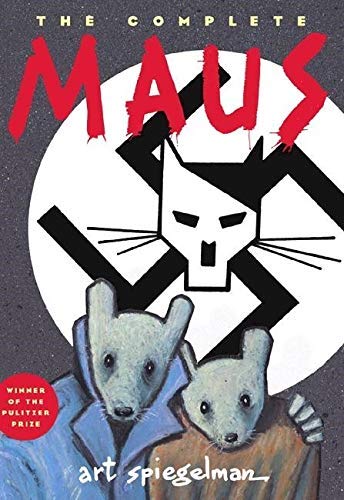27 Dec Maus: A Survivor’s Tale
Art Spiegelman’s retelling of his father’s memories of the Holocaust as a comic was seminal. It brought the horrific history of the Nazi persecution of Jews and the death camps to a new audience in an accessible and emotionally compelling format. The graphic novel, published in two volumes (Maus I: A Survivor’s Tale: My Father Bleeds History, 1986 and Maus II: A Survivor’s Tale: And Here My Troubles Began, 1992), was immediately recognized as a work which changed the public perception of what comics could achieve. It is credited as being one of three works which brought the term “graphic novel” to the public consciousness. At a time when the superhero genres put out by DC Comics and Marvel dominated, and when the underground comics movement had become moribund, Maus breathed new life into the comic book industry.
Upon its release, Maus garnered overwhelmingly positive reviews and won numerous awards, including a Pulitzer Prize. It was also incorporated into school curricula, from middle school through high school and college. Because of the graphic novel format, in some classrooms the book has been used as a cornerstone reference with students encouraged to use their own creative skills to develop comic strips on sensitive topics. The reception of Maus was not without controversy. Critics questioned the use of animals to depict the characters, the representations of different groups, and the appropriateness of a comic book format for such serious subject matter. The book was also banned in a few places, for example, in Russia for the use of a swastika – a prohibited symbol – on the cover.
In recent years, the book has been banned in a few school districts, and is challenged in others, joining other books dealing with the topic of the Holocaust. Parents and school board members have stated objections to the use of profanity and nudity in the book. (Curse words appear eight times and one panel depicts a naked woman in a bathtub in one panel). Others have objected to depictions of executions and cruelty, which proponents of the book have pointed out are unavoidable when teaching the history of the Holocaust.
More Information
Art Spiegelman on Life With a ‘500-Pound Mouse Chasing Me’
The New York Times
Why Maus Was Banned
The Atlantic

